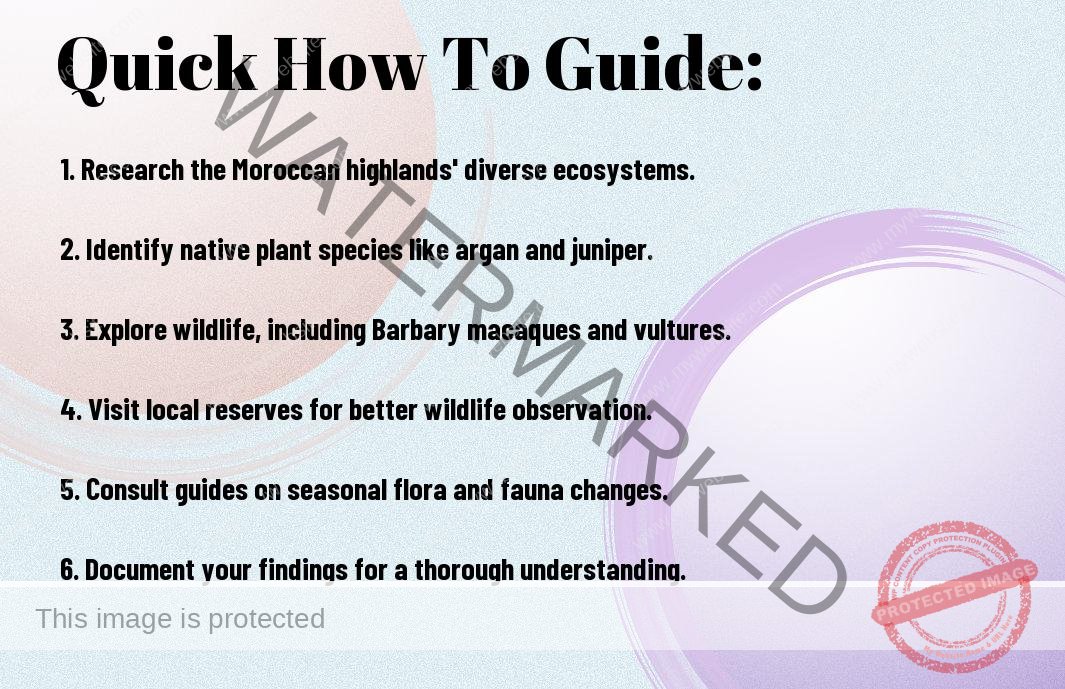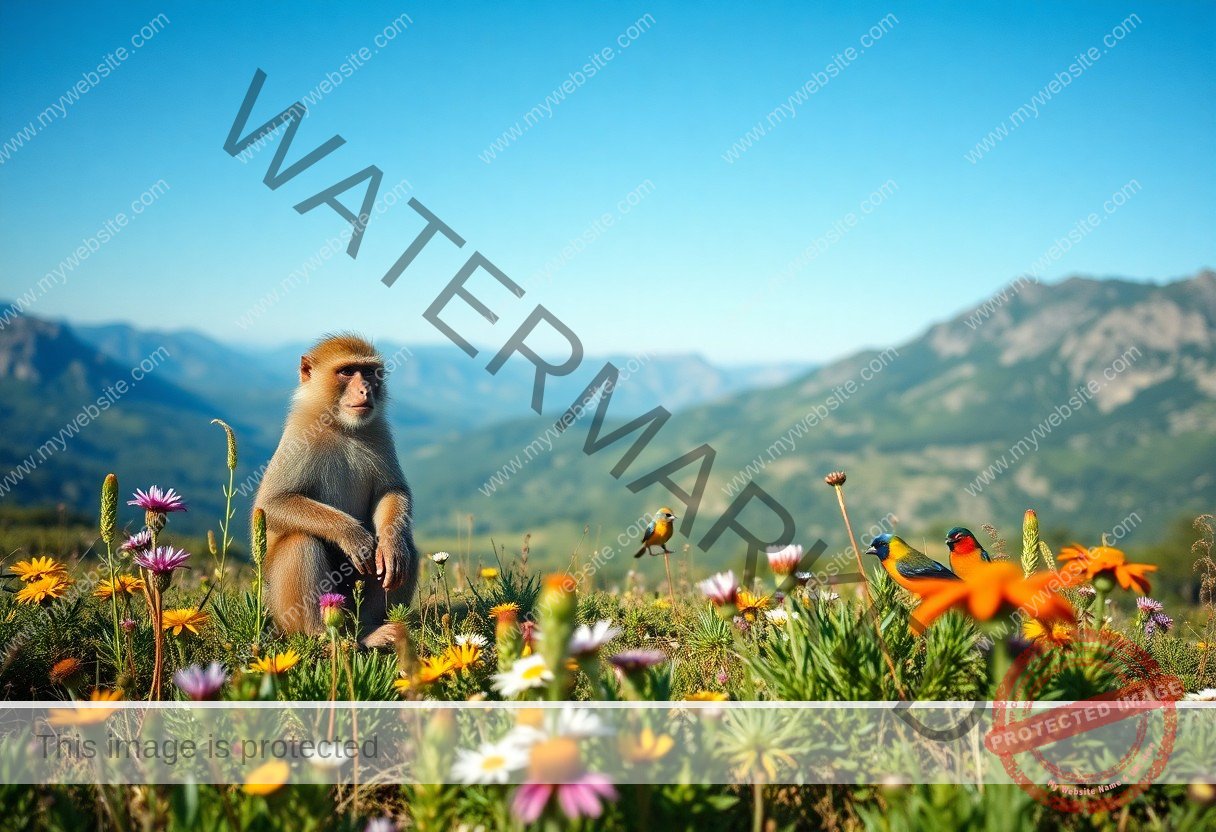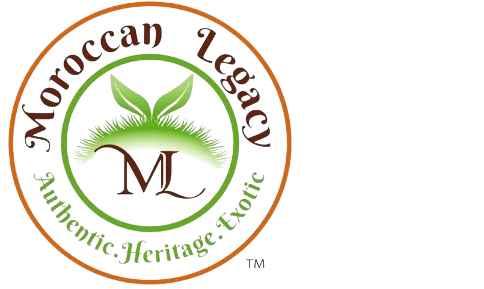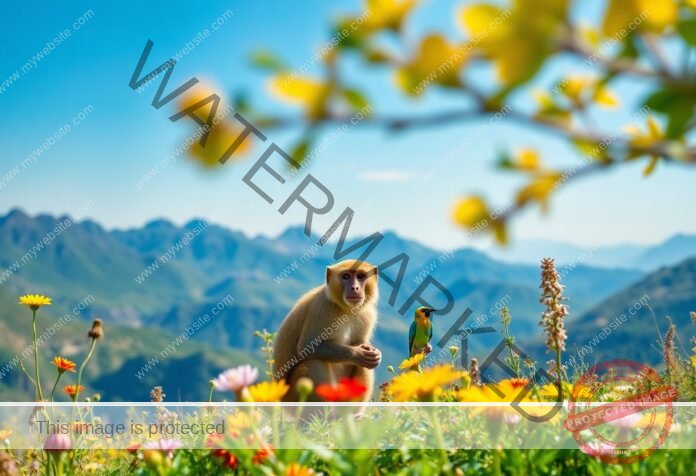You are about to commence on a journey into the stunning Moroccan Highlands, a region teeming with unique plant and animal life. To fully appreciate this remarkable area, it’s vital to understand the rich biodiversity that thrives in its varied landscapes. From the majestic Atlas Mountains stretching across the horizon to the diverse ecosystems they support, you will discover the fascinating flora and fauna that call this enchanting region home. Dive in and explore the remarkable natural wonders that await you in the heart of Morocco.
Advertisement
Key Takeaways:
- Diverse Ecosystems: The Moroccan Highlands feature a variety of ecosystems, ranging from alpine meadows to dense forests, contributing to rich biodiversity.
- Unique Flora: Home to endemic plant species like the Argania spinosa (argan tree) and various medicinal herbs, the region plays a key role in both local tradition and ecological preservation.
- Rich Wildlife: The highlands are inhabited by unique wildlife, including Barbary macaques and diverse bird species, many of which are endemic to the region.
- Climate Influence: The variations in altitude and climate significantly impact the types of flora and fauna found, promoting adaptations to the harsh conditions.
- Conservation Efforts: Various conservation initiatives are underway to protect these ecosystems from threats such as climate change and human encroachment, ensuring the survival of both flora and fauna.


How-To Identify Key Flora in the Moroccan Highlands
For those venturing into the enchanting Moroccan highlands, understanding how to identify native plant species enhances your overall experience. Flora in this region is diverse, featuring a blend of arid and temperate ecosystems with unique vegetation patterns. To distinguish between various types of plants, keep these tips in mind:
Tips for Recognizing Native Plant Species
- Examine the leaves: Shape, size, and color can provide important clues.
- Observe the flowers: Pay attention to their color, arrangement, and blooming season.
- Check the growth form: Identify whether the plant is a shrub, tree, or herbaceous.
- Consider the habitat: Different plants thrive in specific environmental conditions, such as altitude and moisture.
Recognizing the various plant species in the Moroccan highlands can also become an enriching learning experience that deepens your connection with nature.
Factors Influencing Plant Diversity
Any exploration of the captivating Moroccan highlands needs to take into account the various factors that influence plant diversity in the region. Climate, soil type, and topography significantly affect which flora can thrive in specific areas. To understand these influences, observe the following elements:
- Climate variations: Temperature and precipitation patterns play a role in determining plant growth.
- Soil conditions: Nutrient-rich soils tend to support a wider variety of plant life.
- Elevation changes: Different elevations often have distinct vegetation zones.
- Human impact: Land use and agricultural practices can alter natural habitats.
Knowing these factors is imperative for appreciating the intricacies of plant communities in the Moroccan highlands. The interplay of these elements creates a rich tapestry of life that is waiting to be discovered.
Influencing the diversity of flora in the Moroccan highlands is also an interplay of ecological relationships. These can include symbiotic partnerships between plants and animals, as well as competition among species for resources. By understanding these relationships, you can better grasp how flora interacts with its environment and contributes to the overall health of the ecosystem. Additionally, factors such as climate change may increasingly challenge this balance, leading to alterations in plant communities over time.
- Eco-geographic distribution: The geographical area shapes which plants can adapt and thrive.
- Species adaptation: Different plants possess specific traits that help them survive in challenging conditions.
- Pollinator availability: The presence of pollinators can directly impact flowering plant species.
Knowing how these various influences affect the Moroccan highlands will expand your appreciation for this stunning landscape.
How-To Observe Wildlife in the Highlands
Clearly, if you’re planning a wildlife observing adventure in the breathtaking Moroccan Highlands, being equipped with the right knowledge and strategies can enhance your experience significantly. To start, it’s necessary to find suitable locations in the region that offer prime animal spotting opportunities. Researching various hotspots, such as the stunning Atlas Mountains, Morocco, can provide you with insider tips on the best places and times to witness the region’s diverse fauna in their natural habitat.
Tips for Spotting Endemic Fauna
For those eager to spot the unique wildlife that calls the Moroccan Highlands home, focusing on specific strategies can vastly improve your chances. Consider spending time at dawn or dusk when many animals are most active, and utilize binoculars or a good camera lens for a closer look without disturbing them. To further increase your success in spotting endemic creatures, try these tips:
- Familiarize yourself with local wildlife and their habitats.
- Adopt a quiet and patient approach while observing.
- Use natural cover to blend into the environment.
This approach not only allows for a more immersive experience but also respects the instinctive behaviors of wildlife.
Factors That Affect Animal Behavior
Wildlife in the Moroccan Highlands is often influenced by various environmental and social factors that dictate their behavior. Understanding these aspects can help you predict where and when to observe certain species. Factors such as temperature fluctuations, seasonal changes, and the presence of predators can significantly alter animal activities. Some of the elements to consider include:
- Availability of food sources.
- Breeding seasons, which may drive increased activity.
- Human activity that may disturb natural behaviors.
Thou should also pay attention to the time of day and weather conditions that can shift species’ behavior patterns.
Behavioral nuances are incredibly fascinating when it comes to understanding the regional wildlife. Many species may become more elusive during peak tourist seasons or adapt their routines in response to human interference. Observing animal behavior is not just about the thrill of spotting a rare species; it’s about embracing the opportunity to learn how they coexist within their environment. Key considerations include:
- Changes in territory as animals seek food or mates.
- The impact of climate on migration patterns.
- Responses to intruders in their habitats.
Thou can augment your wildlife observation experience by being mindful of these dynamics, enhancing both your understanding and appreciation of the majestic creatures inhabiting the Moroccan Highlands.
How-To Engage with Local Ecosystems
Now, when you venture into the stunning landscapes of the Moroccan Highlands, it is important to engage with the local ecosystems sustainably. You can start your adventure by exploring informative resources like the Atlas Mountains Adventure Guide: Map, Hike, Ski & Weather. This guide not only enhances your knowledge about the terrain but also prepares you for the unique flora and fauna present in this area. As you move through these ecosystems, adopting responsible practices will ensure that your impact on the environment is minimized while allowing you to appreciate the natural beauty surrounding you.
Tips for Sustainable Exploration
Tips for engaging with the rich ecosystems of the Moroccan Highlands include:
- Stay on marked trails to minimize soil erosion and protect native plant species.
- Carry out all waste, including biodegradable items, to keep the environment clean.
- Respect animal habitats by observing wildlife from a distance without disturbing their natural behaviors.
- Use eco-friendly products to avoid introducing harmful substances into the environment.
Perceiving the intricate balance between human interaction and nature can deepen your appreciation for the delicate ecosystems you encounter.
Factors Contributors to Ecosystem Health
Tips for understanding the factors that contribute to ecosystem health include:
- Recognizing the importance of species diversity for ecosystem stability and resilience.
- Observing how climate factors, such as precipitation and temperature, affect local flora and fauna.
- Learning about human impacts, including agriculture and urbanization, that can alter natural habitats.
- Appreciating local conservation efforts aimed at protecting wildlife and their environments.
Assume that knowledge and awareness of these elements enhance your ability to engage meaningfully with the environment. Your actions can be a part of the solution rather than a problem.
It is paramount to understand that a healthy ecosystem depends on interplay between different species and the habitats they inhabit. Factors like pollution, over-exploitation of resources, and climate change can significantly impact this balance. By learning about local ecosystems and participating in conservation efforts, you can contribute to sustaining the natural beauty of the Moroccan Highlands for future visitors.
- Participate in local conservation initiatives or community programs that focus on environmental protection.
- Educate yourself on sustainable practices that can be implemented in daily life to support ecosystem health.
- Share your knowledge and experiences with others to inspire further engagement with the natural world.
It takes collective effort to promote well-being within ecosystems, and you can play an integral part in this vital mission.
How-To Document Your Findings
Keep in mind that recording your experiences is imperative for building a comprehensive understanding of the Moroccan highlands’ unique ecology. Engaging with the local flora and fauna is a rewarding adventure, and accurately documenting these findings can significantly enhance your appreciation of this breathtaking environment. You might want to explore resources such as Morocco’s Fascinating Flora to gather background information. A well-maintained journal will not only help you reflect on your observations but also contribute to the broader knowledge of biodiversity in the region.
Tips for Keeping an Effective Journal
One way to create an effective journal is by being consistent and detail-oriented in your entries. Offering thorough descriptions of the flora and fauna you encounter will enhance your records and provide valuable insights during later analysis. Consider including the following in your journal:
- Date and location of observations
- Details about the habitat and environment
- Descriptions of specific species, including physical characteristics and behavior
- Any interactions you observe between species
Recognizing the significance of these details will improve your understanding of the relationships within this unique ecosystem.
Factors to Consider for Accurate Reporting
Assuming you wish to ensure the accuracy of your journal entries, a few factors require your careful attention. Environmental conditions, for instance, can heavily influence the behavior and appearance of the flora and fauna in the highlands. Important elements to consider include:
- Weather conditions during observations
- Time of day and season
- Changes in habitat due to human activities or natural events
- Presence of other species that may affect behavior or sightings
The meticulous documentation of these factors will create a richer context for your findings, enabling better recollection and understanding of the ecological dynamics at play.
To deepen your reporting accuracy, aim to follow a structured approach in your documentation. Utilizing categories or sections in your journal can help systematically organize your observations. Additionally, consider the following aspects:
- Cross-referencing with reputable sources for species identification
- Utilizing photographs to complement your written records
- Reviewing and updating your notes periodically for accuracy
- Engaging in discussions with local experts or fellow enthusiasts
The clarity and coherence of your findings will largely depend on your diligence and commitment to detail.
How-To Support Conservation Efforts
To ensure the stunning biodiversity of the Moroccan Highlands is preserved, you can actively engage in conservation efforts in your local community. Little actions can make a big difference, and by getting involved, you can contribute to the protection of unique flora and fauna. Here are a few tips for how to get started:
Tips for Getting Involved Locally
- Join local conservation groups focused on wildlife protection.
- Participate in native plant restoration projects.
- Attend workshops and educational programs about local ecosystems.
- Volunteer for clean-up events in natural habitats.
Perceiving the importance of community efforts in conservation will help foster a greater appreciation for the breathtaking environment of the Moroccan Highlands.
Factors in Successful Conservation Strategies
To promote effective conservation strategies, it’s vital to understand the various elements that play a role in these initiatives. Individuals like you can significantly impact these strategies by supporting sustainable practices that protect local habitats. Below are some key factors to consider when engaging with conservation efforts:
- Collaboration with local communities and indigenous knowledge.
- Developing and promoting sustainable tourism initiatives.
- Incorporating scientific research in decision-making.
- Raising awareness about the ecological significance of the region.
After establishing a foundation based on these factors, you can model responsible behavior that promotes the welfare of the stunning Moroccan Highlands.
Getting involved in conservation requires a multifaceted approach that addresses both environmental and social aspects. By participating in community-based actions and supporting policies that align with sustainable practices, you can help create a resilient ecosystem. Focus on strategies that encourage habitat preservation, promote biodiversity, and engage with local communities to enact meaningful change. This holistic approach fosters strong relationships and can lead to sustainable conservation outcomes.
- Encouraging ecological education in schools and communities.
- Building partnerships with local governments and organizations.
- Utilizing technology to monitor species and habitats.
- Creating incentive programs for conservation-related practices.
After investing in these strategies, you will be well on your way to making a positive impact on the enchanting landscape of the Moroccan Highlands.
How-To Appreciate the Scenic Beauty
After spending time in the breathtaking Moroccan highlands, you’ll want to fully embrace and capture the stunning landscapes that surround you. To truly appreciate the scenic beauty, it’s imperative to engage your senses and take in the intricate details of the flora and fauna that thrive in this unique environment. Allow the sound of rustling leaves, the sight of diverse plant life, and the serene atmosphere to immerse you, enhancing your connection to nature and the picturesque surroundings.
Tips for Scenic Photography
Some of the best photographs come from patience and practice. To capture the essence of the Moroccan highlands, consider these tips while exploring:
- Utilize natural light, especially during the golden hours of sunrise and sunset.
- Experiment with different angles and focal lengths to bring depth to your images.
- Incorporate elements of local wildlife to add a dynamic aspect to your shots.
- Focus on the intricate details of plants and landscapes, showcasing their unique textures.
This approach will not only yield stunning photos but deepen your appreciation for the stunning vistas and the delicate balance of life within this ecosystem.
Factors Enhancing Visual Experiences
On your journey through the Moroccan highlands, various factors contribute to enriching your visual experiences. The interplay of light and shadow as the sun moves across the sky creates captivating contrasts. Seasonal changes also play a significant role, with vibrant wildflowers blooming in spring and the golden hues of autumn foliage. Natural landmarks such as mountains, rivers, and valleys further highlight the rugged beauty of the landscape.
- Pay attention to the time of day, as lighting dramatically transforms the scenery.
- Explore different terrains, from lush valleys to rocky peaks, for diverse visual encounters.
- Look out for wildlife that can add life and movement to your observations.
- Engage with the local culture and traditions to provide a rich narrative to your visual experience.
Recognizing these factors can enhance your ability to truly appreciate the visual spectacle that surrounds you in the highlands.
Experiences in the Moroccan highlands are enriched by being aware of your environment. Observing the subtle shifts in landscapes, like the reflective quality of water in the valleys or the majestic silhouettes of mountains against the sky, provides a deeper understanding of the natural world’s beauty. Utilizing your senses fully—taking in not just the sights, but the sounds and scents—will amplify the richness of your outdoor explorations. You will find that recognizing the interactions between the flora, fauna, and terrain will significantly enhance your overall experience.
Conclusion
On the whole, exploring the breathtaking Moroccan Highlands provides you with a unique opportunity to witness an incredible diversity of flora and fauna. From the vibrant green valleys to the rugged mountain terrain, the region is home to various plant species that thrive in its distinct microclimates. You can encounter the endemic Atlas cedar, as well as wild thyme and lavender that fill the air with their fragrant aroma. Each step through this majestic landscape reveals more layers of life, portraying the intricate relationships between the vegetation and the wildlife that depend on it.
Your experience in the Moroccan Highlands is further enriched by the chance to observe diverse animal species, ranging from the elusive Barbary macaques in the cedar forests to the striking migratory birds that journey through during seasonal changes. By taking a moment to appreciate both the flora and fauna, you gain a deeper understanding of the ecological balance present in this breathtaking region. The rich biodiversity not only captivates the senses but also highlights the importance of conserving these natural wonders for future generations to enjoy.
FAQ
Q: What types of flora are commonly found in the Moroccan Highlands?
A: The Moroccan Highlands boast a diverse range of flora, including endemic species such as the Atlas cedar, cork oak, and various types of wildflowers like the Moroccan bluebell and numerous species of orchids. The region’s climate, characterized by its mountainous terrain and varying altitudes, supports both Mediterranean and alpine vegetation, providing a unique blend of plant life.
Q: Are there any endangered plant species in the Moroccan Highlands?
A: Yes, several plant species in the Moroccan Highlands are considered endangered due to habitat loss and climate change. One notable example is the Argan tree, which is crucial for both the ecosystem and local agriculture. Conservation efforts are ongoing to protect these species and their habitats.
Q: What types of animals can be found in the Moroccan Highlands?
A: The animal life in the Moroccan Highlands is diverse, with species such as the Barbary macaque, various species of wild goats, and numerous birds of prey like the golden eagle. Additionally, the region is home to smaller mammals and reptiles that thrive in the various ecosystems found within the highlands.
Q: How does the biodiversity of the Moroccan Highlands compare to other regions in Morocco?
A: The Moroccan Highlands are known for their high biodiversity due to the unique climatic conditions and varied altitudes. While other regions in Morocco, such as the Sahara Desert and coastal areas, have their unique flora and fauna, the highlands offer a mix of Mediterranean and alpine species that are not found in other areas, making it a critical region for biodiversity in Morocco.
Q: What conservation efforts are in place to protect the flora and fauna in the Moroccan Highlands?
A: There are several conservation initiatives aimed at preserving the unique biodiversity of the Moroccan Highlands. These include the establishment of protected areas and national parks, community-based conservation programs, and collaborations with international organizations to promote sustainable land use practices. Education and awareness campaigns are also crucial in engaging local communities in conservation efforts.

